The following article will try to define what decorative painting is. Decorative painting is a technique commonly misnamed and referred to as “faux finishing.”
To help eliminate this confusion, I will describe this trade. Decorative painting transforms a basecoated surface into a decorative finish, and the majority of techniques use a glaze to create this new finish. Some examples of this include the imitation of natural surfaces like wood or marble, glazing to add depth and color to the basecoat, hand-painted ornamentation and even by extension gilded finishes and polished plaster finishes. Essentially, any way to transform your single-color basecoat using glaze to create a new finish. It’s important to understand that any decorative finish will be the sum of (priming-basecoating) plus (glazing). By this, I mean that you can’t create a faux finish without good preparation and a basecoat.
Being a Decorative Painter
With decorative painting being so reliant on painted surface preparation, historically, the trade of a decorative painter (also faux finisher or decorator) is rooted in the house painting trade and not in the artistic trade, as one might assume. One must, of course, demonstrate artistic quality in order to be a good decorative painter, but it is a trade first and foremost, just like carpentry. In the trade of decorative painting, one must have the tools of the trade as well as understanding color theory, learning techniques used in layering glazes, mastering “brushmanship,” painting with longevity in mind, and how to light fast and protect the longevity of your work with varnishes. In other words, it is not a talent-based art; it is a learned craft.
Too often, I have overheard house painters say things like, “I am not talented enough,” “I can’t draw” or “It seems too hard.” The truth is that none of these statements apply to the trade of a decorative painter. A finisher is a professional painter that works with a goal that is defined by a contract or a written agreement, just like a house painter. It is not an inspirational compulsion or desire to create the way an artist would. One must be dedicated to learning a trade that requires many, many repetitions to master. “Five percent talent and 95 percent practice” is the motto that I have printed on the shirts of my students in decorative painting workshops as a reminder. Even with the genius of Leonardo da Vinci, he still would have had 15 percent talent and 85 percent practice. So, don’t get discouraged before you even paint your first baseboard in a faux walnut technique. I myself came from being a graphic designer to working as a sign painter, which is another learned craft with strict forms. How many alphabets did I have to paint, repaint and practice until I finally started my first glass signage job? It is the same for decorative painting. Naturally, like in any trade, having a broad range of knowledge of historical periods and styles while being a bit adventurous and artistic will make you a better decorative painter, for sure. However, one still has to spend time in their workshop practicing, which is the surest way to make oneself proficient in their craft.
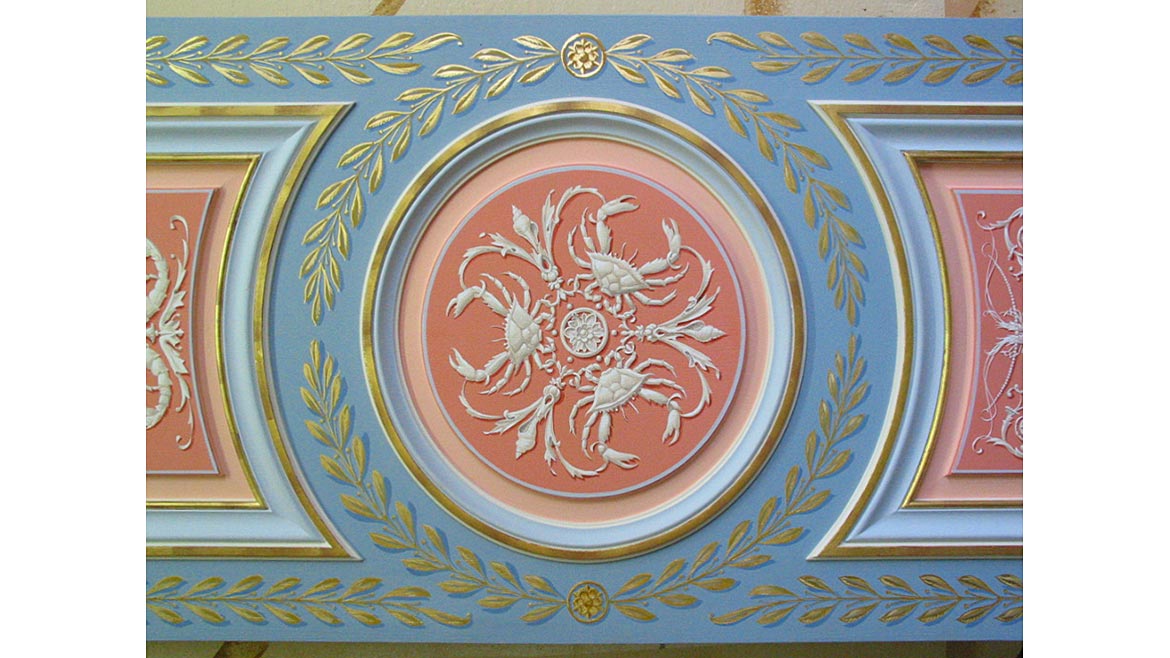

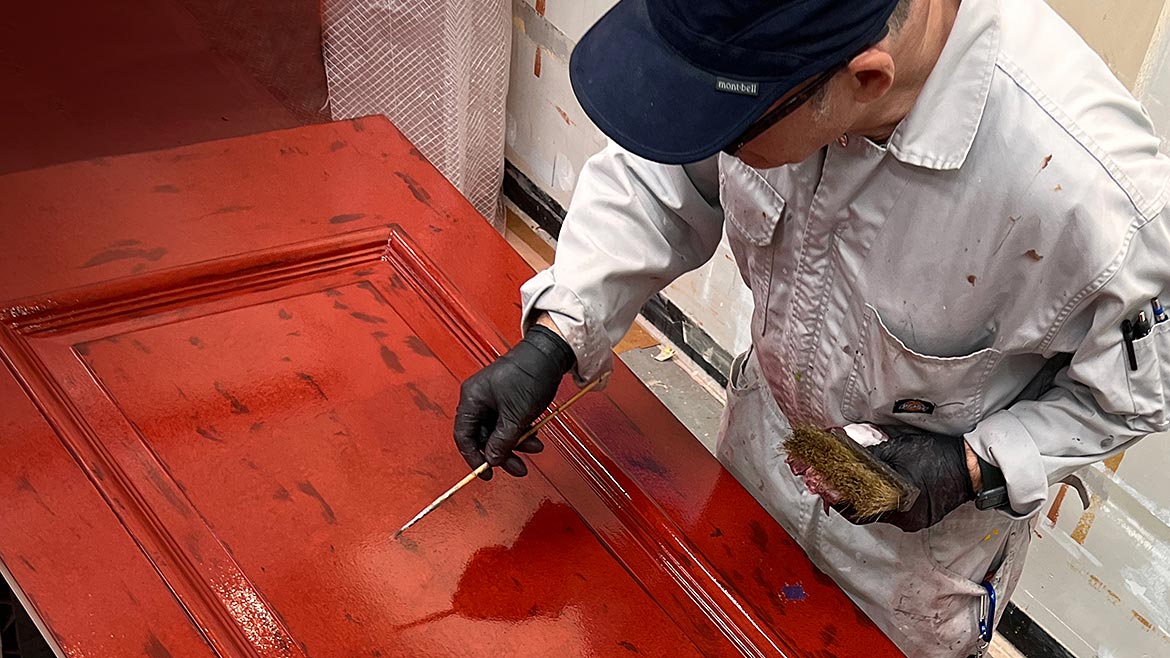
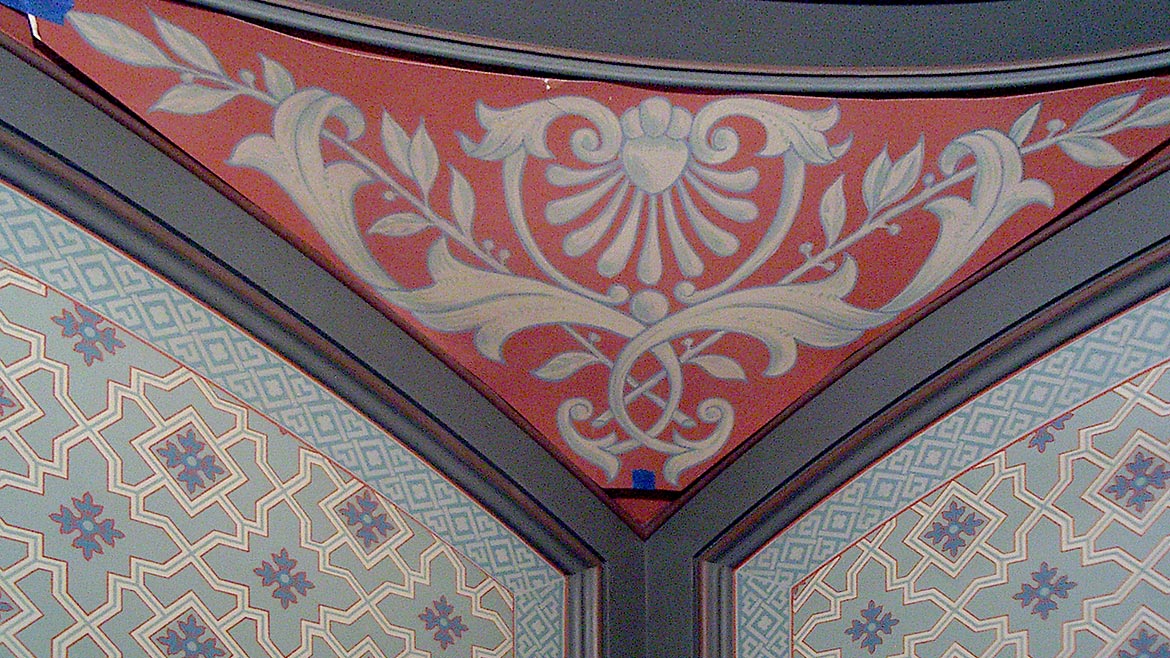
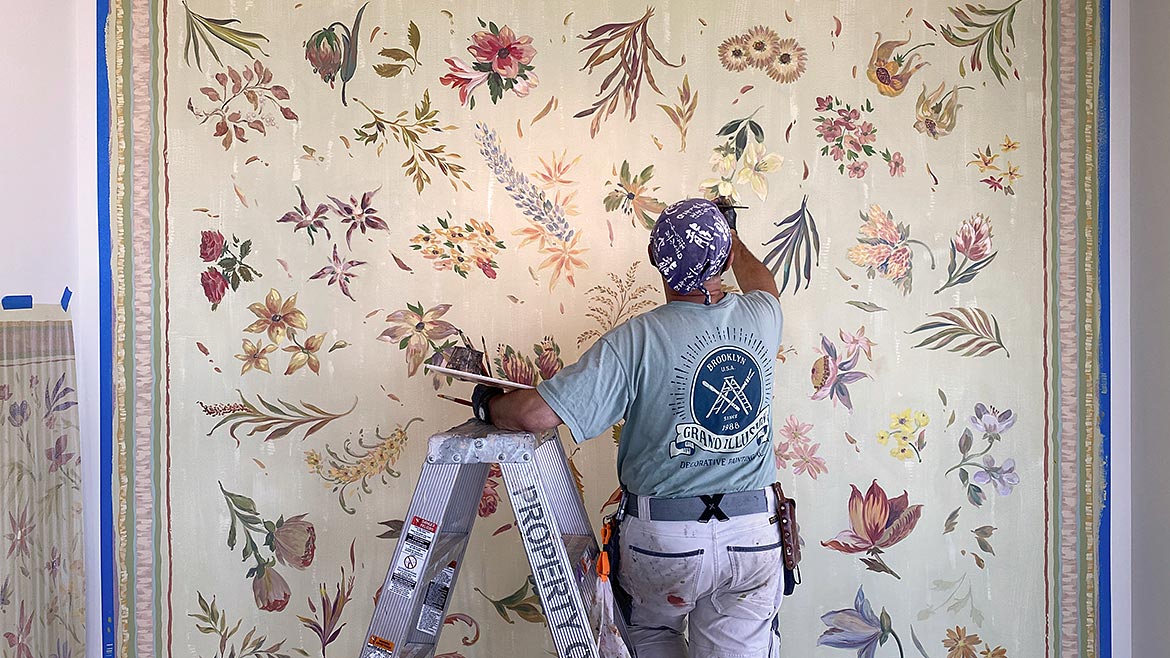
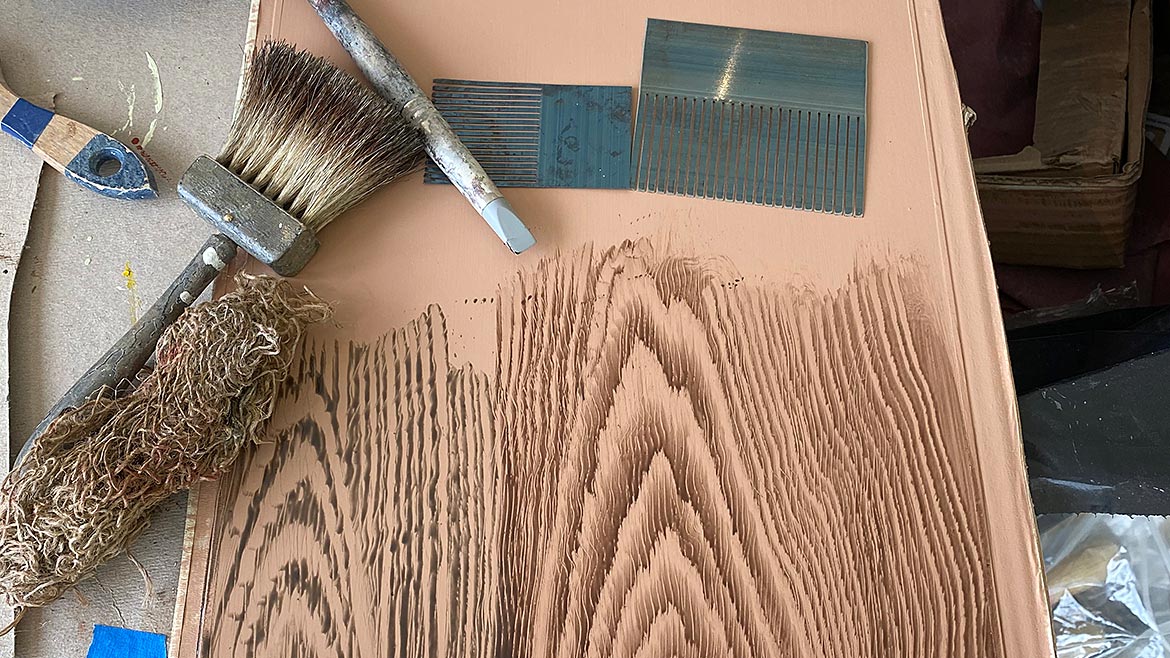
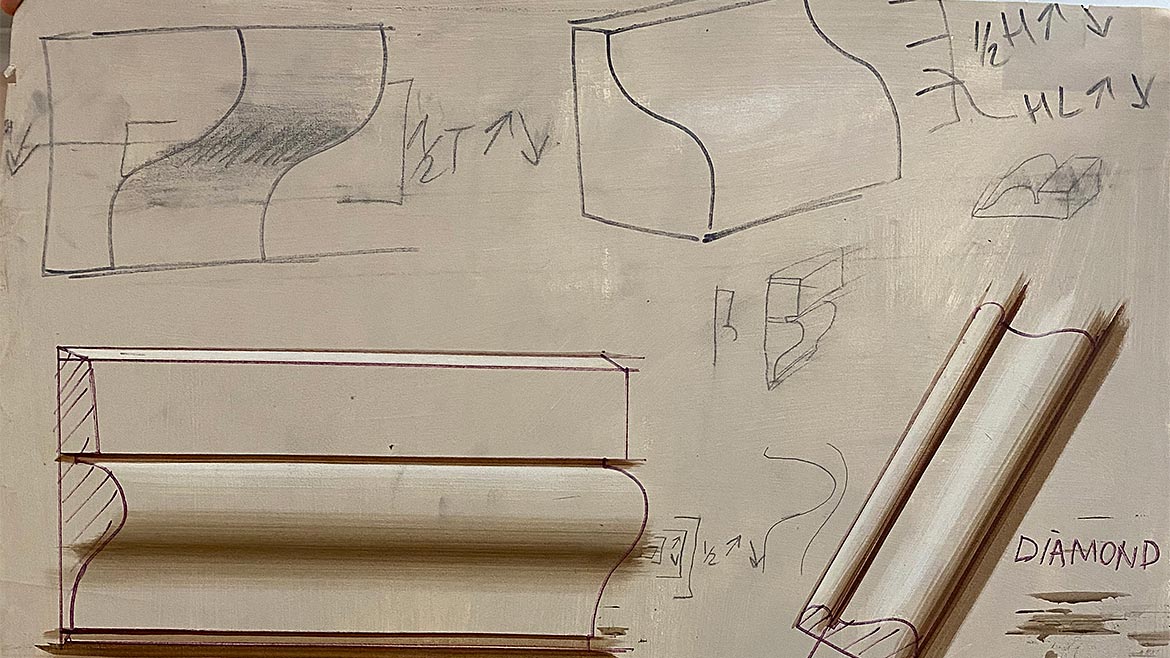
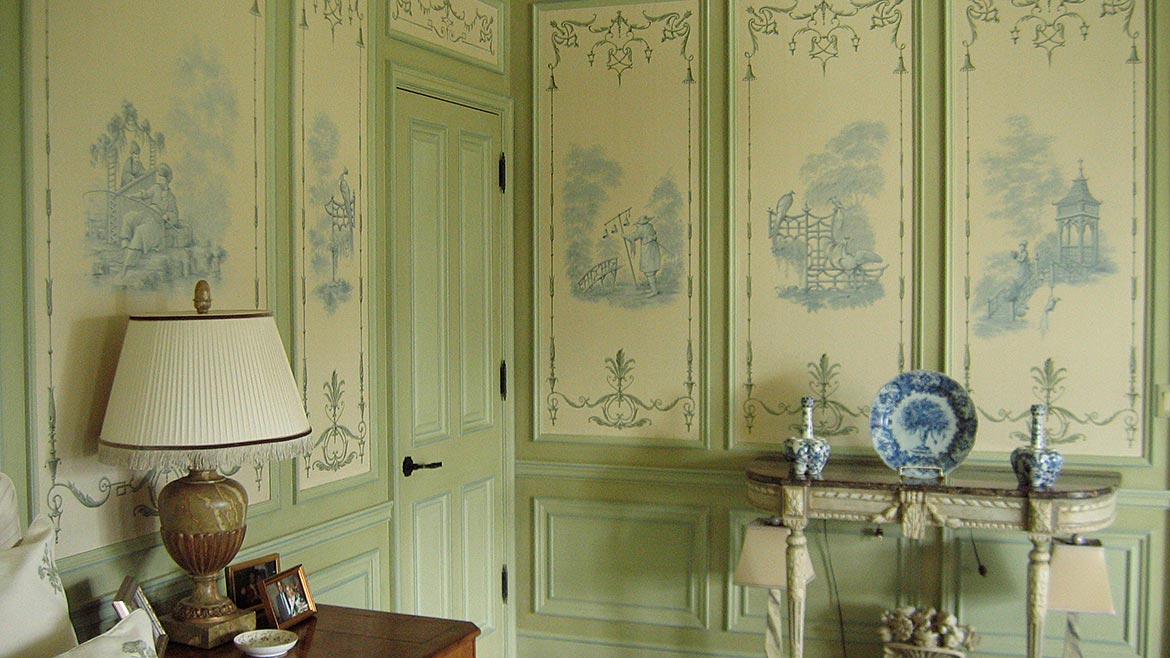
Types of Decorative Painting
Now that you have a better understanding of what makes a decorative painter, let’s go over what decorative painting is. Historically (from the 19th century up to the 1950s), all good house painting shops would have had one or two decorative painters on staff to handle the decorative painting needs. They would be in charge of all the many categories of work:
Wood graining is the imitation of wood species, such as oak, walnut, mahogany, maples, exotic woods, pine, burl, etc. Wood graining was generally taught first to the apprentices, especially oak because of its many designs, including the figure, straight grain, quarter-sawn and even roots and pollard cut. In the late 19th century, mahogany was considered an exotic species in Europe, so it was often imitated in lieu of the real thing.
Faux marble, or marbling, is the imitation of all marble minerals, including white veined, yellow sienna, green antique, portor (black and gold), rouge royal, all sorts of breccias, semi-precious stones, onyx, lapis and malachite. Most of the faux marble work was reserved for the baseboard, wainscot, columns, wall paneling and staircases. In Europe, it was common practice for the house painting company in charge of repainting stair halls, staircases and the lobby of even a not-so-prominent apartment building to finish them all with faux marble bases, and paint the walls and doors in faux oak.
Glazing and patina was often used to create wall coloring with more depth and achieve beautiful tonalities that a simple color coat would not obtain, though the finish form started to appear later on in order to recreate the aging of a paint. In the 1980s, during the big revival of faux finishes, we employed rags, sponges, and many tools and brushes to create visual textures and effects that you will certainly recognize by the names: “sponging,” “striae,” “Ombre,” “aging,” “patina,” “color wash,” “stippling,” “ragging” and many more. To me, these glazing techniques are the cornerstones of the trade and the most accessible techniques to start with to build your confidence in becoming a decorative painter. They are also critical to better understanding how a basecoat color is affected by a transparent glaze to create a new color. All the faux finish techniques are often based on glazing or layering transparent colors in certain ways in order to create an effect, a print or a design (like in wood graining and marbling).
Stenciling is a way to transfer a design onto a flat surface using a cut stencil. At the time, most stencils were hand-designed and hand-cut and used a nubby, shorthaired round brush to transfer color through the cuts of the stencil. Some of the more elaborate work would consist of using dozens of stencils that overlapped each other to create spectacular ornamentation. The stencil hit its height in the late 19th and early 20th centuries, was supplanted by wallpapers and more recently has been neglected for looking too simplistic. However, there too, using creativity and skill, you can recreate very complex designs and imitations.
Ornamentation is the art of embellishing the surface to provide decoration, such as adding colored stripes, painted friezes, trompe l’oeil (see below) or polychrome work (using many colors to accentuate a form or architectural element). The purpose of ornamentation is to decorate, add depth and emphasize the architecture and details of the room. Used throughout the centuries, from Greek antiquity to the mural decoration of Pompeii to medieval times to the Renaissance to the Baroque to the 19th century to the art nouveau art deco to the neoclassical revival of the ’80s, it is a style of painting that has reinvented itself and adapted to the fashion of the time. Nowadays, it is almost never used in the modern minimalist movement, but it is still widely used in all the classic settings.
Trompe l’oeil (tromp loy), which literally means “fool the eye,” is a technique at the expert level, as you need to understand some geometry and be able to represent 2-D surfaces to look 3-D through the use of solid and faded stripes, as well as freehand work. Once again, it takes a lot of practice and repetition to complete this work quickly. In 1900, there were shops that would have craftsmen that would exclusively stripe and lay out full stone block arrangements with a few chalk marks and stripe the entire lobby or entrance of the building (common work to do at the time) in a couple of days. Some of the trompe l’oeil can be very intricate or simple faux molding to give a metal elevator door the look of a wood door.
Gilding is the technique of laying ultra-thin leaves of gold (1/1000th of an inch) over a gold size (a tacky varnish) to cover ornaments, architectural elements, ceilings, domes, etc. Gilding for decorative painters is mostly applying gold or metal leaves to architectural detail and pictorial work. Gilders are a separate cooperation that would also work on furniture, frames, etc.
Mural is also rooted in the history of civilization, from the early cave paintings to the Roman antiquity Pompeii works to the magnificent frescoes of the Renaissance to the decorative murals of our time. Those large-scale paintings would take the artist out of the easel and into the job site to work on large surfaces. Nevertheless, it could be as simple as hand-painted silhouettes in a child’s room, a painted frieze of a simple landscape or a peak of a garden through a window. There too, the notion of trompe l’oeil is fully used.
Sign painting—yes, a good decorative painting shop would have been tasked with doing some signage—would not be their primary function, but often buildings being repainted would also need some signage to indicate the floor numbers, the exit, etc. It also shares the same brushmanship and rigor of strokes as ornamentation.
Polished plasters are also rooted in the Renaissance era, where the exploitation of marble and its physical weight would prevent installation on buildings whose load bearing was too low, like in Venice, thus the name Venetian plaster, which has now morphed into all types of troweled finishes that have enough lime content and can be burnished into a polished surface. Although this category of work is really more recent, it is a big part of the deco painter world, as these finishes sit well in many settings, from ultra-contemporary to “old world” classics.
There are also lacquerers that specialize in lacquering and, more recently, cold metallization (an article will be coming up on both topics soon).
You Could be a Decorative Painter
As you can see, the job of a decorative painter is truly multifaceted and very expressive, and only a few companies could handle all aspects of the trade. One may find that overwhelming, but, rest assured, you don’t have to be a “jack-of-all-trades” to be a decorative painter. Start simple with easy-to-master techniques like glazing and then, once you are confident, move to a more involved technique. Your customers will most likely challenge you and ask for some decorative plasterwork or even a baseboard in straight graining. You will one day be able to tackle anything that your client asks for. There are many decorative painting companies that specialize in only a couple of these techniques and do them very well, staying in their lane and maximizing their productivity.
I urge you to try some of those techniques that will surely add additional income but, most importantly, will add a very inspiring and satisfying element to your paint trade.
In addition, remember, “Don’t be a faux painter; be a real painter of faux.”






Report Abusive Comment